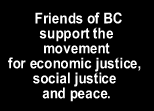
|
||||||||||||||||||||||
 |
||||||||||||||||||||||
 |
||||||||||||||||||||||
 |
||||||||||||||||||||||
 |
||||||||||||||||||||||
 |
||||||||||||||||||||||
 |
| The current issue is always free to everyone |
|
|
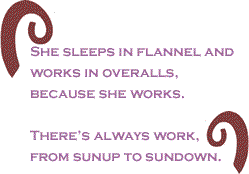 |
| It’s a simple story plot. Mother and daughter await the arrival of the “college girl.” College girl arrives. Mother hugs college girl, and the sister hugs college girl. Soon, it’s the mother and her daughters - and home. Family and friends come to be in the home of the mother and her daughters. Soon the college girl is among a collective, and they’re singing, eating, dancing, and laughing. “I wait in the yard that Maggie and I made so clean and wavy yesterday afternoon.” It’s more comfortable than most people would imagine, almost “an extended living room” where people can come and sit under the elm tree and feel the breeze. Maggie, a grown daughter now, is nervous. Maggie, “homely and ashamed of the burn scar down her arms and legs,” stands in a corner. “In real life,” the mother is a “big-boned
woman” with “man-working hands.” The mother “never had an education.” But The daughter, the college girl, Dee, would read to her and Maggie: She “burned us with a lot of knowledge we didn’t necessarily need to know. Pressed us to her with the serious way she read, to shove us away at just the moment, like dimwits, we seemed about to understand.” “But there they are,” the mother observes.
“What happened to ‘ What happened to What happened to the honored memory of an immediate
ancestor? What happens to that particular history of Big At the table, with the familiar stable of what
became known as “soul food,” the mother notes that the young
man doesn’t eat and “Aunt Dee’s first husband whittled the dash,”
Maggie says real low. But The mother knows now that there’s another kind of war. Her home has been invaded from without by means of someone within. Familial relationships have been fragmented. What is labeled by the outside - progress - turns out to be more than a singular point of attack. Send the weapons of mass, stealthy destruction out from within!
“Can I have these old quilts?” A girl has a warped sense of entitlement!! The mother heard something fall in the kitchen where Maggie was cleaning up. She asks They are Maggie’s quilts, the mother tells her. They have been passed to Maggie. “Maggie can’t appreciate these quilts!” The mother remembered that when she offered
one of the quilts to Dee before she left for college,
“What would you do with them?” The only thing you “could” do - hang them! The only thing you could do with our history now - hang it in a display as something transcended, something distant, indeed, dead. Fill the new façade of attire, hair, and new names with emptiness. Fill it with other people’s values of what is and isn’t priceless. Substitute the functional with the trivial and the ultimate blurring of the other’s way of calculating the worth of human beings and their culture and history so as to make it less harmful, less threatening. Black lived experiences and heritage are a mere collection of anecdotes and artifacts to the daughter, the one who should pass it on. What happened to The mother looks at Maggie who had come out of the kitchen. “She can have them, Mama,” she said, like somebody used to never winning anything, or having anything reserved for her. “I can remember Grandma Dee without the quilts,” Maggie says. The mother looks at Dee, looks hard at “I did something I never had done before: hugged Maggie to me, then dragged her on into the room, snatched the quilts out of Miss Wangero’s hands and dumped them into Maggie’s lap.” “Take one or two of the others.”
Understand what? Your heritage! “You ought to try to make something of yourself, too Maggie. It’s really a new day for us. But from the way you and Mama still live you’d never know it.” The mother watches Maggie smile as The same college girl appears today. She out-numbers
the Maggies of our community. Her name is neither
She doesn’t know that it’s not her idea
or the ideas of her generation that seeks to eliminate the
struggle, to kill resistance to the fascist takeover beginning
with Blacks in And while the last 40 years since the “Civil Rights” movement has witnessed white backlash and has sent Blacks in America back 50 years, to a widening gap in health, education, employment but a higher rate of incarceration, she will hip hop to the mall with white friends singing of one America, signing “we are the same” - white Americans! Empire at its best work! They have taken our children and gone down the river with them where they’ve morphed into zombies. And the mothers and grandmas know the white people have done it again! They’ve conquered from within. They have come into the yard, one more time - and we let them in! The short story, “Everyday Use” (from In
Love & Trouble: Stories of Black Women BlackCommentator.com Editorial Board member, Lenore Jean Daniels,
PhD, has been a writer, for over thirty years of commentary,
resistance criticism and cultural theory, and short stories
with a Marxist sensibility to the impact of cultural narrative
violence and its antithesis, resistance narratives. With entrenched
dedication to justice and equality, she has served as a coordinator
of student and community resistance projects that encourage
the Black Feminist idea of an equalitarian community and facilitator
of student-teacher communities behind the walls of academia
for the last twenty years. Dr. Daniels holds a PhD in Modern
American Literatures, with a specialty in Cultural Theory
(race, gender, class narratives) from |
Your comments are always welcome. e-Mail
re-print notice
If you send us an e-Mail message we may publish all or part of it, unless you tell us it is not for publication. You may also request that we withhold your name. Thank you very much for your readership. |
|
| May
8, 2008 Issue 276 |
|
| Executive Editor: Bill Fletcher, Jr. |
| Managing
Editor: |
| Publisher: Peter Gamble |
| Est. April 5, 2002 |
| Printer Friendly Version in resizeable plain text format format or pdf format. |
 |
 |
 |
| |
| |





















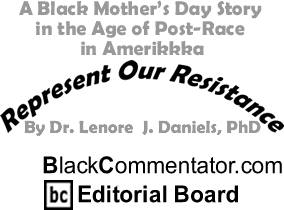
 It’s
Dee and her boyfriend.
It’s
Dee and her boyfriend. 
 And
we will have nothing left that is ours. Everything can be
categorized, appraised, and sold for a price - including our
everyday humanity, becoming useful only to function within
the market system.
And
we will have nothing left that is ours. Everything can be
categorized, appraised, and sold for a price - including our
everyday humanity, becoming useful only to function within
the market system. 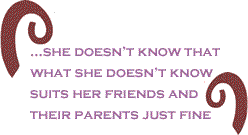
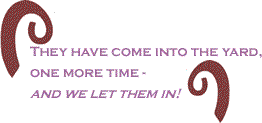 Among
her white friends, children of liberal parents, she fits right
in. The white friends don’t need to know anything about her
heritage, about her need to continue to resist. She doesn’t
want to know either. The anecdotes and artifacts don’t
even exist for her. Everything of the Black American past
(and its future?) is an old memory belonging to the “Civil
Rights” generation. This is what she’s learned, what she’s
been taught to believe, so she doesn’t know that what she
doesn’t know suits her friends and their parents just fine.
Among
her white friends, children of liberal parents, she fits right
in. The white friends don’t need to know anything about her
heritage, about her need to continue to resist. She doesn’t
want to know either. The anecdotes and artifacts don’t
even exist for her. Everything of the Black American past
(and its future?) is an old memory belonging to the “Civil
Rights” generation. This is what she’s learned, what she’s
been taught to believe, so she doesn’t know that what she
doesn’t know suits her friends and their parents just fine.


